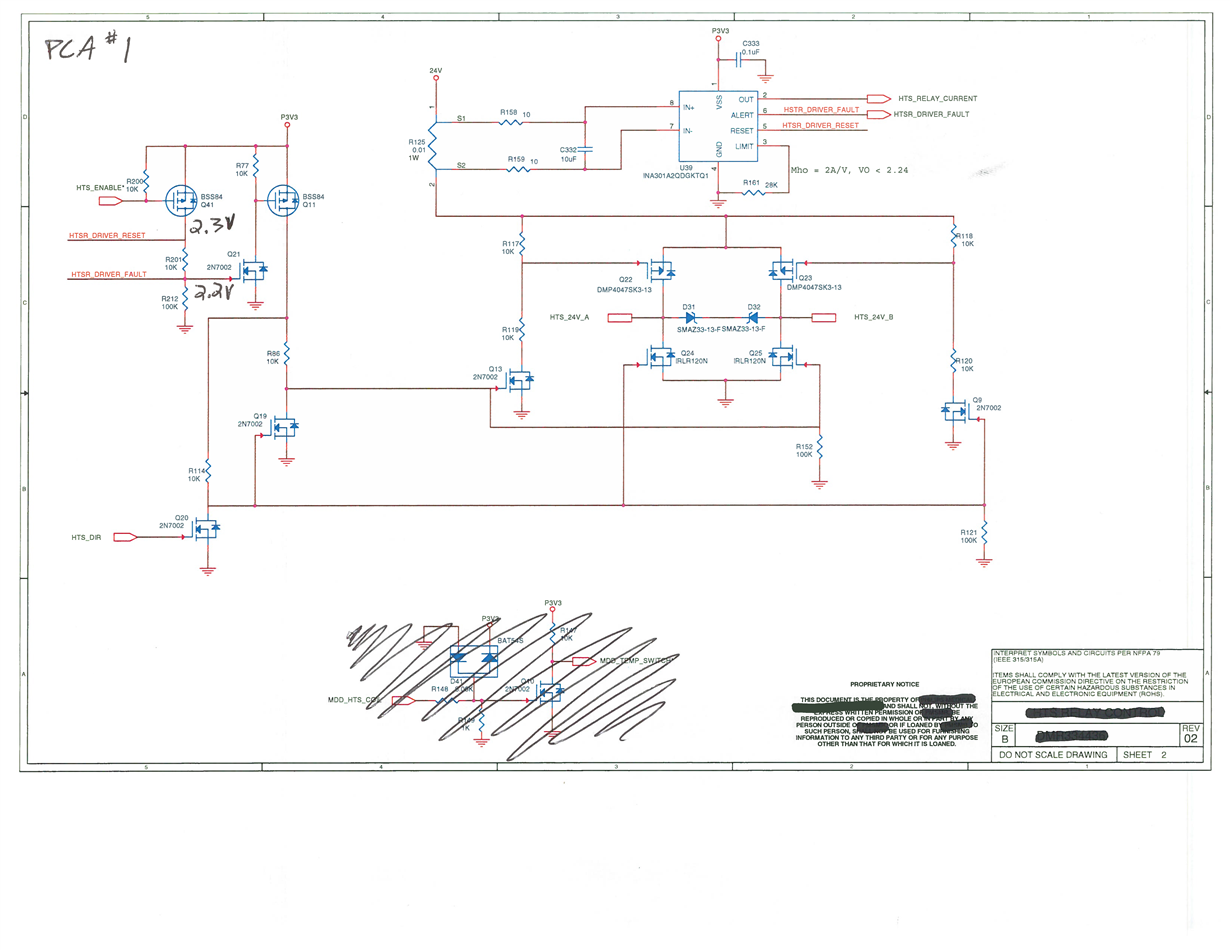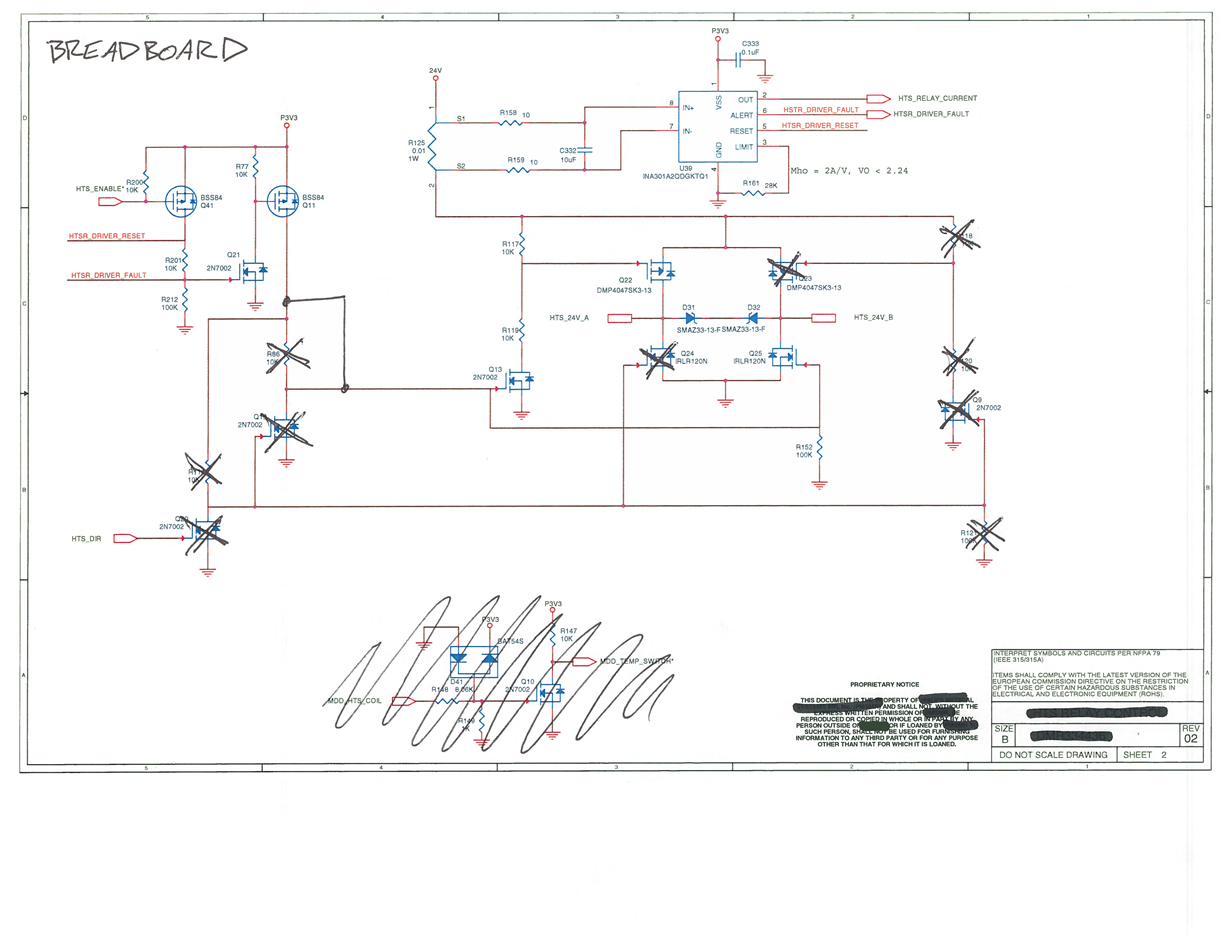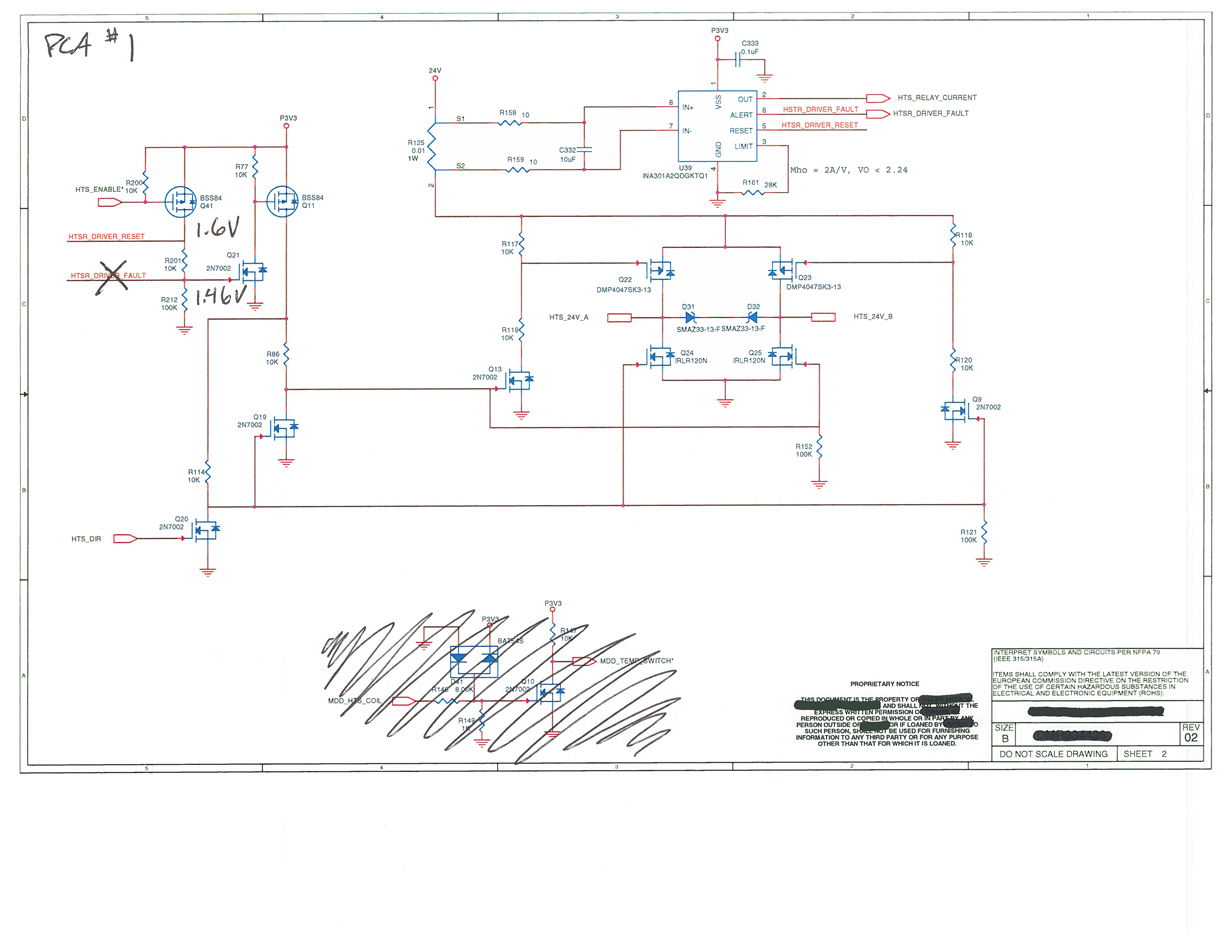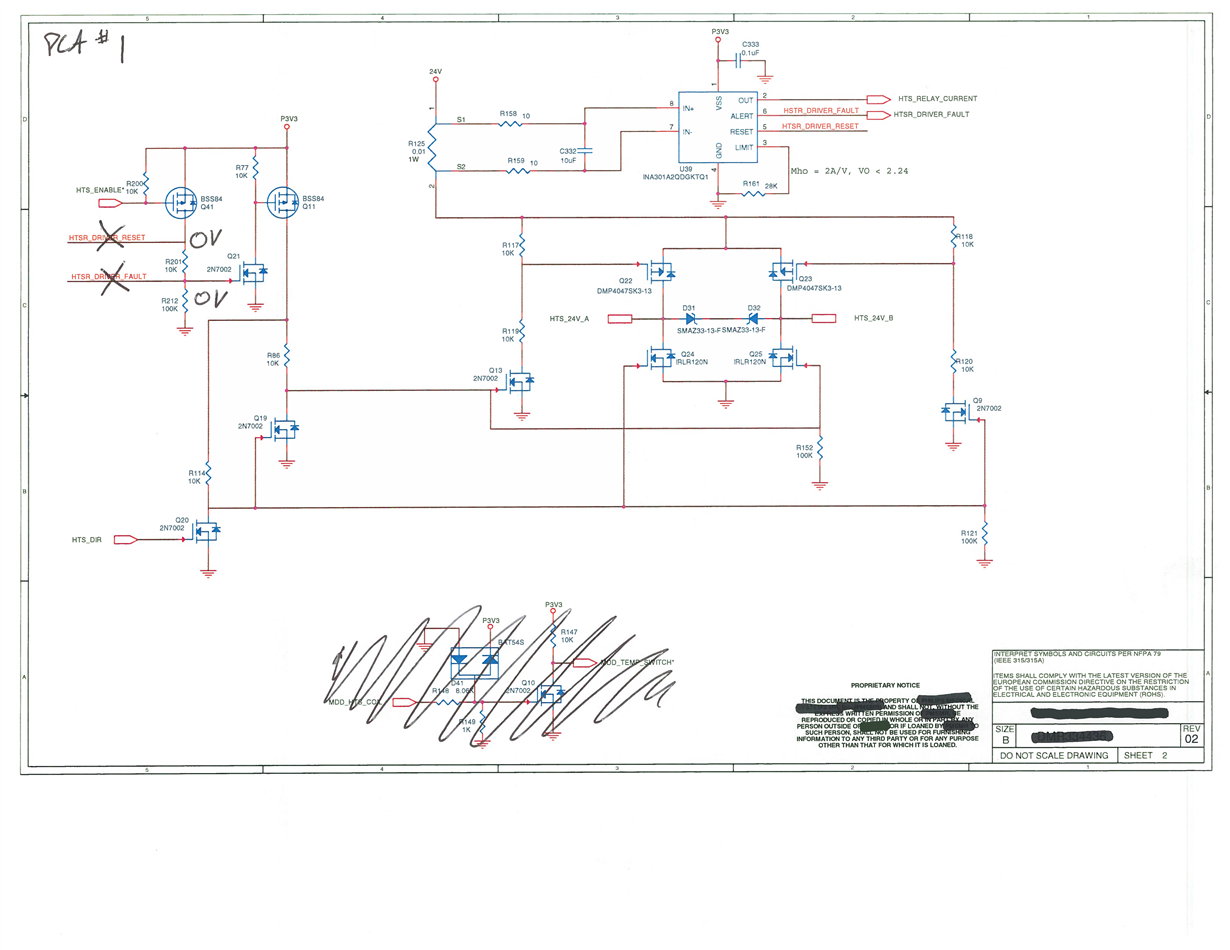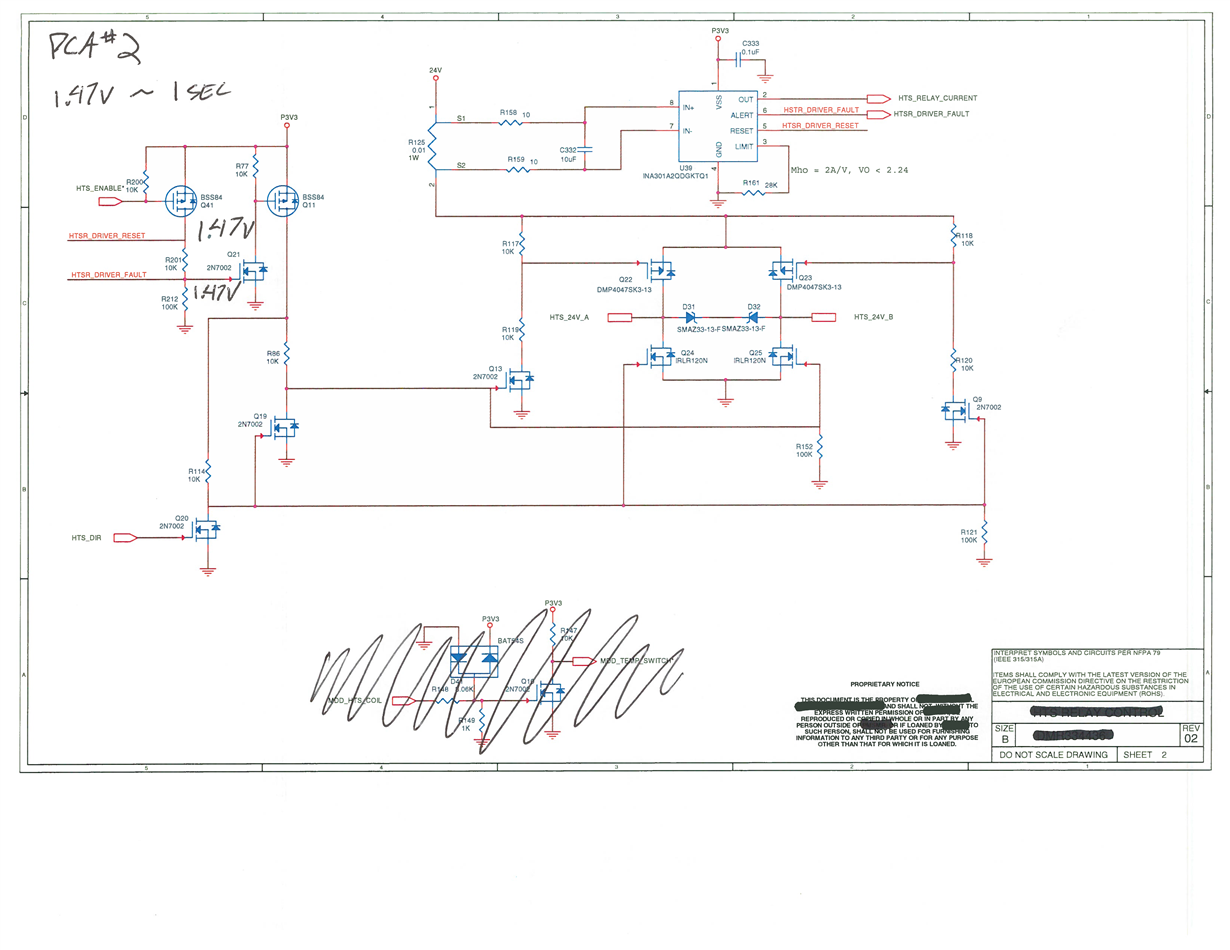Hello,
Here is an 24VDC H-bridge driver circuit for a ~1A relay coil. It has Enable and Direction control bits, and an INA301 Gain=50 high-side current monitoring.
Enable bit is active-low; upon enable: drain of Q41 and gate of Q21 go high, U39 Reset goes high and switches to "latching" mode. Upon fault, alert pin of U39 goes low, gate of Q21 is pulled low. Upon removal of enable, drain of Q41 goes low, resetting fault on U39.
The problem: Circuit built on breadboard with half-bridge works correctly. Built PCA 1 has strange behavior, with the following voltages seen below after the removal of enable. The Reset and Alert lines are jumpered on PCA 1, so I'm able to break these connections and measure. Built PCA 2 has strange behavior as well, but that behavior spontaneously corrects itself some time (~1 second, with sharp transition) after the removal of the enable. PCA 2 does not have jumpers that I can disconnect.
I've replaced the INA301 with a new chip on PCA 1, put the old chip on a breakout board and put it in the breadboard circuit, where it behaves correctly, and the new chip behaves on PCA 1 poorly. Q21 and Q41 have also both been replaced, with the same behavior. All the resistors measure correctly, and the circuits ring continuity within nodes. I'm looking for a direction to go with the troubleshooting, or if I've missed some normal behavior of the INA301. I've reviewed the gerber designs of the PCAs, they look correct, and have not seen any evidence of fabrication errors.
Thanks
AJ


